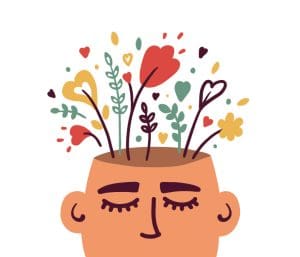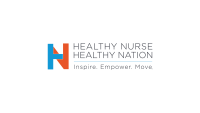Learn how to incorporate intentional moments of calm into your workday.
Takeaways:
- Reducing burnout, a work-based phenomenon, requires self-care practiced in the work setting.
- Brief self-care practices can be included in daily workflows.
- Self-care can’t be one-size-fits; it must be unique, diverse, and culturally based.
Editor’s note: American Nurses Month this May is divided into four weekly focus areas—Self-Care, Recognition, Professional Development, and Community Engagement. This article offers suggestions for incorporating wellness practices into your workday.
Everybody’s talking about burnout and self-care. Although both should remain top of mind, these terms are used so frequently that they’re starting to lose their meaning. Or worse, when people talk about burnout and self-care, many clinical teams roll their eyes and just keep pushing on. As a former clinical nurse (who rolled his eyes when people talked about self-care a decade ago) and now a nurse leader, I recognize these eye-rolls as a clear signal from bedside teams. We need to think differently about how we approach burnout and self-care and focus on evidence-based practices—from both a health system and an individual nurse perspective.
Health system perspective
Health systems must change their approach to decreasing burnout. Burnout is defined as a work-related condition, which means that events in the workplace contribute to exhaustion, cynicism about work, and reduced job performance. These factors, as defined by the World Health Organization, ultimately cause harm to patients, nurses, and other healthcare professionals.


Self-care resources
American Nurse Journal has published several articles focused on nurse self-care.
Individual perspective
Individual nurses can incorporate several practices into their days to help reduce the effects of burnout. You can perform many of them in the time it takes to move from one patient room to another.
The Pause
Originally developed by an emergency department (ED) nurse at the University of Virginia, The Pause was designed to offer teams a chance to briefly reflect on a stressful situation, such as when a patient dies. Since its inception, this practice has been adapted and adopted by hundreds of health systems for use after various types of encounters. Research on The Pause shows that after stopping briefly, for just 45 seconds, our bodies become more present and connected with others.
How to do it: After a death, a person on the care team might say, “Let’s pause to honor the person who just died, we may not have known them, but we can know that they loved and were loved, we can know that they were a part of a family. Let’s also pause to honor everyone here on this team who did their best to support this person’s care.” Then the group stands in silence for 30 to 60 seconds. The person who started The Pause then says, “Thank you,” and the team goes back to work.
You also can initiate a pause at the end of a huddle or team meeting by saying: “Before we go to work, let’s pause to reflect on the knowledge and wisdom everyone in this meeting brings to our team. Let’s reflect on how we can use our knowledge and compassion to help our patients and families today.” The group stands in silence and the person who began The Pause says, “Thank you,” and the team moves on.
Pause at the pump
This kind of pause is a bit different from The Pause. It was shared with me by a frontline nurse colleague at Emory Healthcare. This practice reflects literature that supports the physical act of pausing, which can lower stress response in the body.
How to do it: Find appropriate moments in the day to intentionally reflect. For example, each time you perform hand hygiene (pump sanitizing gel), consider silently reciting a prayer or mantra related to patient care or meditating on the health and wellbeing of a patient or yourself. Focus your mental intention, using words and belief systems that have meaning for you, to reconnect with yourself and the healing you’ll soon provide.
4-7-8 breathing
Developed by Dr. Andrew Weil, 4-7-8 breathing increases vagal tone slightly and decreases feelings of physical stress. It can be performed as you’re moving from one patient’s room to another, to gear up for a challenging procedure, or to calm down after a stressful encounter.
How to do it: As you inhale, silently count to four as fast or as slow as you like (the goal is to eventually slow down the count, but you don’t have to do that immediately). Hold your breath gently in your body to a count of seven. Then exhale to a count of eight. As you’re learning the practice, perform this cycle two to three times. An alternative is using the same number (for instance, four) for the inhale, hold, and exhale. Some people prefer that practice in highly stressful settings.
Move your body
Taking a few seconds or a few minutes during your shift to stretch your arms, legs, shoulders, or neck will help increase blood flow and potentially relieve some stress.
How to do it: If you participate in a contemplative practice, such as yoga, you may be familiar with some specific stretches and poses. However, yoga knowledge isn’t required. This self-care practice focuses on moving your body in different ways than you normally might for a few seconds. Do only what you’re able, and avoid overdoing it. You can move your body while standing, sitting in a chair, or even while relaxing in the break room. You might inspire your colleagues to join you.
Get outside
Studies on the Japanese practice of Shinrin Yoku (Forest Bathing) align with other research on the benefits of being outside in nature: Stress hormones decrease in the body, people take deeper breaths, and the mind settles. In addition, going outside typically requires some physical activity, which means that if you’re generally sedentary, going outside can be a form of low-impact exercise.
How to do it: If you work in an ED or other unit based on a ground floor, make an effort to step outside and get a breath of fresh air, even if only for a few minutes. If you work on a higher floor or below the main floor, partner with your teammates to cover each other for a few minutes so you can take the time go outside.
See and share
Showing gratitude for others can be challenging during stressful times, but it carries power, especially when it acknowledges specific acts. Practicing gratitude regularly aids team member connection and reduces stress. In addition, camaraderie plays an important role in reducing feelings of exhaustion and burnout.
How to do it: See refers to noticing the good that your colleagues are doing. What contributions do you notice from other nurses, technicians, desk staff, security staff, environmental services, physicians, and other team members? When you see a contribution, take active steps to share with that person what you saw and that you’re grateful. Keep these messages brief, so you can share them in person or via email if you have time. A general statement of gratitude (I’m grateful for everything you do.) has less meaning than pointing out particular moments (I just saw how you spent extra time with that patient because they were afraid. Thank you for that.).
Good change
None of these self-care practices will remove all feelings of burnout, but if any of them resonate with you or your team, keep practicing. Over time, they may help reduce stress, anxiety, and in some cases, exhaustion. If a practice doesn’t work, try something else.
Whatever you choose, take it slow. Try out little things at first and let them build on their own. This is kaizen, a Japanese word that means “good change.” Put simply, kaizen is about taking one step at a time toward a larger goal. If you’re training for a marathon, you don’t begin by running 20 miles. You start slow, running or even walking a half a mile or less, and then increase distance over time. The same principle applies to self-care practices—maybe you start by pausing for only a few seconds or performing just two cycles of 4-7-8 breathing. Over time you can increase pause lengths and breathing cycles. If you’re trying Pause at the Pump, consider doing it just a few times per shift. If it resonates with you, gradually increase the number of times you do it throughout the day. Arguably, Florence Nightingale suggested that nurses practice kaizen when she said, “So never lose an opportunity of urging a practical beginning, however small, for it is wonderful how often in such matters the mustard-seed germinates and roots itself.”
When hospital leaders take meaningful steps to create spaces for practicing self-care and individual nurses and their teams implement brief, on-the-job practices, we’ll see a slow shift toward healthier workplaces as we begin the long recovery from the COVID-19 pandemic. We’ll do this together, one breath at a time.
Tim Cunningham is the co-chief well-being officer at the Woodruff Health Sciences Center, vice president of practice and innovation at Emory Healthcare, and adjunct associate professor at the Nell Hodgson Woodruff School of Nursing, Emory University in Atlanta, Georgia.
References
Çayir E, Cunningham T, Ackard R, Haizlip J, Logan J, Yan G. The effects of the medical pause on physiological stress markers among health care providers: A pilot randomized controlled trial. West J Nurs Res. 2021. doi:10.1177/01939459211027657
Cunningham T, Pfeiffer K. Posttraumatic growth as a model to measure and guide implementation of covid-19 recovery and resiliency. Nurs Adm Q. 2022;46(1):81-7. doi:10.1097/NAQ.0000000000000509
Ducar DM, Cunningham T. Honoring life after death: Mapping the spread of the pause. Am J Hosp Palliat Med. 2019;36(5):429-35. doi:10.1177/1049909118813553
Fontaine DK, Cunningham T, May NB. Self-Care for New and Student Nurses. Indianapolis, IN: Sigma; 2021.
Jha AP. Peak Mind: Find Your Focus, Own Your Attention, Invest 12 Minutes a Day. San Francisco, CA: HarperOne; 2021.
Lin Z, Kunze K, Ueki A, Inakage M. AromaCue—A scent toolkit to cope with stress using the 4-7-8 breathing method. Proceedings of the 14th International Conference on Tangible, Embedded, and Embodied Interaction. 2020. doi:10.1145/3374920.3374940
Nightingale, F. Letter to a friend. In: Cook, ET, The life of Florence Nightingale in two volumes. 2 1862-1910. London, UK; Macmillan Publishing; 1914: 406.
Sheridan CB. The Mindful Nurse: Using the Power of Mindfulness and Compassion to Help You Thrive in Your Work. Lexington, KY: Rivertime Press; 2016.
World Health Organization Burn-out an “occupational phenomenon”: International Classification of Diseases. May 28, 2019


















